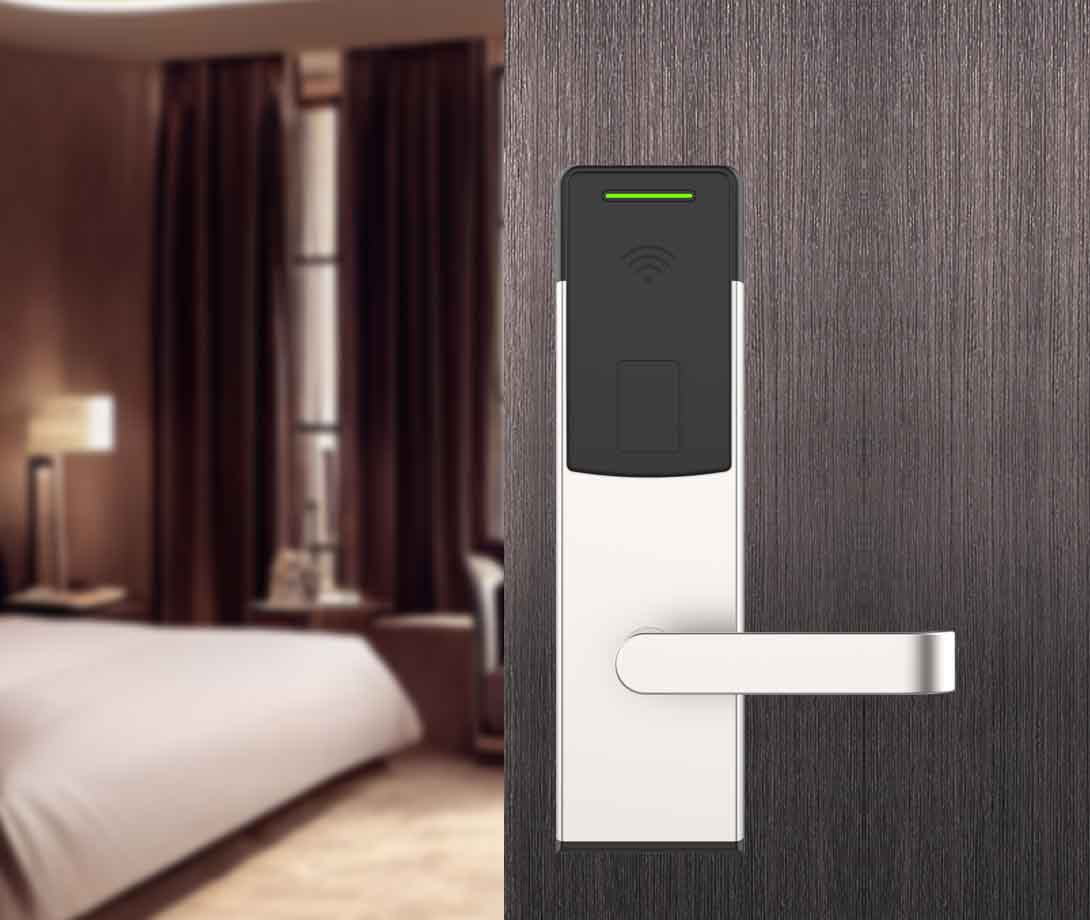How Do Hotel Electronic Door Locks Work?
The Magic Behind Your Hotel Room Keycard
Ever wondered how that flimsy plastic card reliably unlocks your hotel door? Modern hotel locking systems combine cutting-edge technology with military-grade security – and they’re far more sophisticated than the locks in most American homes. Let’s break down exactly how these systems operate.
1. The Main Components of Hotel Electronic Locks
A. The Lock Itself
- Mortise-style mechanism (embedded in door)
- RFID/NFC reader (for keycards)
- Battery compartment (lasts 2-5 years)
- Audit trail memory (logs every entry)
B. The Keycards
- RFID chips (most common)
- Magnetic stripes (older systems)
- NFC-enabled (newer smartphones as keys)
C. The Backend System
- Front desk encoder
- Property management software
- Master key modules
2. How Your Keycard Actually Works
Step-by-Step Unlocking Process
- Encoding at Check-In: Front desk assigns unique cryptographic signature to your card
- Authentication: Card reader verifies signature matches room assignment
- Power Activation: Lock releases when valid card is presented
- Logging: System records exact entry time
“The encryption used in Onity HT locks is more complex than most ATM cards,” explains Mark Johnson, a security consultant for Hilton properties.
3. Different Types of Hotel Lock Systems
A. Magnetic Stripe (Older But Reliable)
- How it works: Swipe card like credit card
- Pros: Cheap to maintain
- Cons: Easily demagnetized (keep away from phones!)
B. RFID (Most Common Today)
- How it works: Tap card near reader
- Pros: Faster, more durable
- Cons: More expensive system
C. Mobile Access (Cutting Edge)
- How it works: Use smartphone via app
- Pros: No physical card to lose
- Cons: Only 12% of US hotels currently offer
4. Security Features You Never Noticed
Hotels use multiple layers of protection:
- Auto-Expiring Keys: Cards stop working at checkout time
- Master Key Hierarchy:
- Housekeeping (time-restricted access)
- Manager (all rooms but logged)
- Emergency (fire department override)
- Brute Force Protection: Locks freeze after 5 failed attempts
- Physical Tamper Alerts: Notifies staff if lock is forced
5. What Happens When Systems Fail?
Even high-tech systems have backup plans:
- Battery Backup: Lasts 6-12 months
- Mechanical Override: All electronic locks have emergency key access
- Portable Programmer: Maintenance can reprogram locks offline
Pro Tip: If your card stops working, the front desk can reset it in under 30 seconds – no need to replace your whole key.
6. How Hotels Prevent Previous Guests From Returning
The system automatically:
- Deletes old codes at checkout
- Generates new encryption for next guest
- Updates all door locks in real-time
This process is why your old keycard won’t work if you try to sneak back in later.
7. Comparing Hotel vs. Home Smart Locks
| Feature | Hotel Locks | Residential Smart Locks |
|---|---|---|
| Encryption | 128-bit AES | Usually 64-bit |
| User Tracking | Full audit trail | Basic activity log |
| Key Management | Centralized system | Individual control |
| Battery Life | 3-5 years | 6-12 months |
| Cost Per Lock |
200−500 |
150−400 |
8. The Future of Hotel Security
Emerging technologies include:
- Facial recognition entry (tested in Las Vegas)
- Voice authentication (coming to Marriott)
- Blockchain-based keys (eliminating card cloning)
Why This Matters to You
Understanding these systems helps you:
- Appreciate the security protecting your belongings
- Troubleshoot issues when keycards fail
- Make informed choices about mobile key adoption
Next time you tap that plastic card, remember there’s an entire invisible security infrastructure working to keep you safe – all without a single traditional key in sight.
Post time: Apr-23-2025


